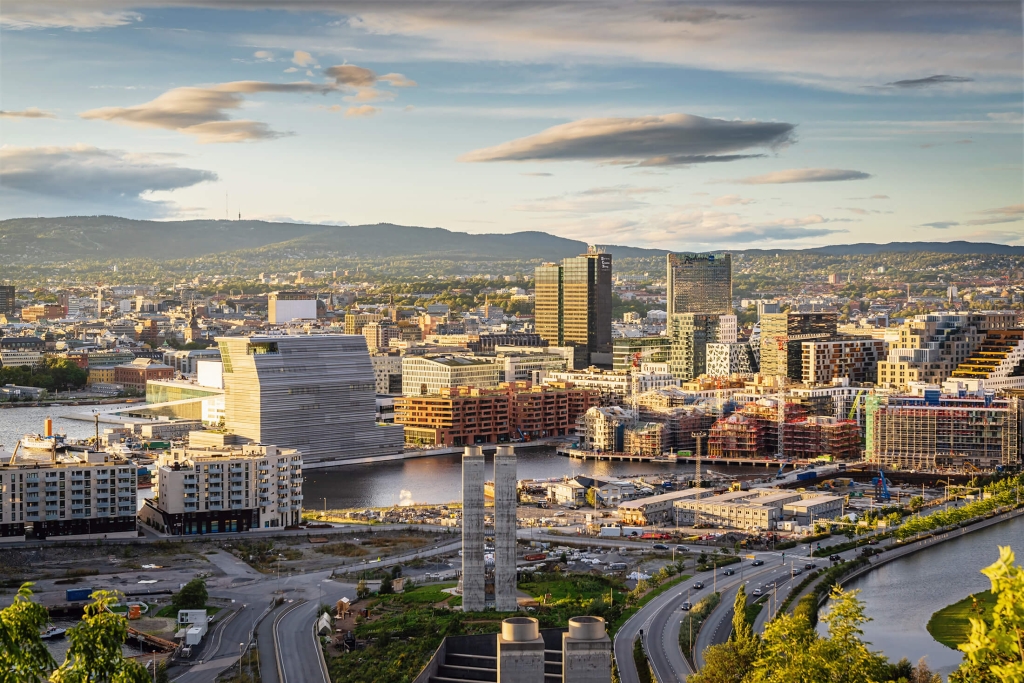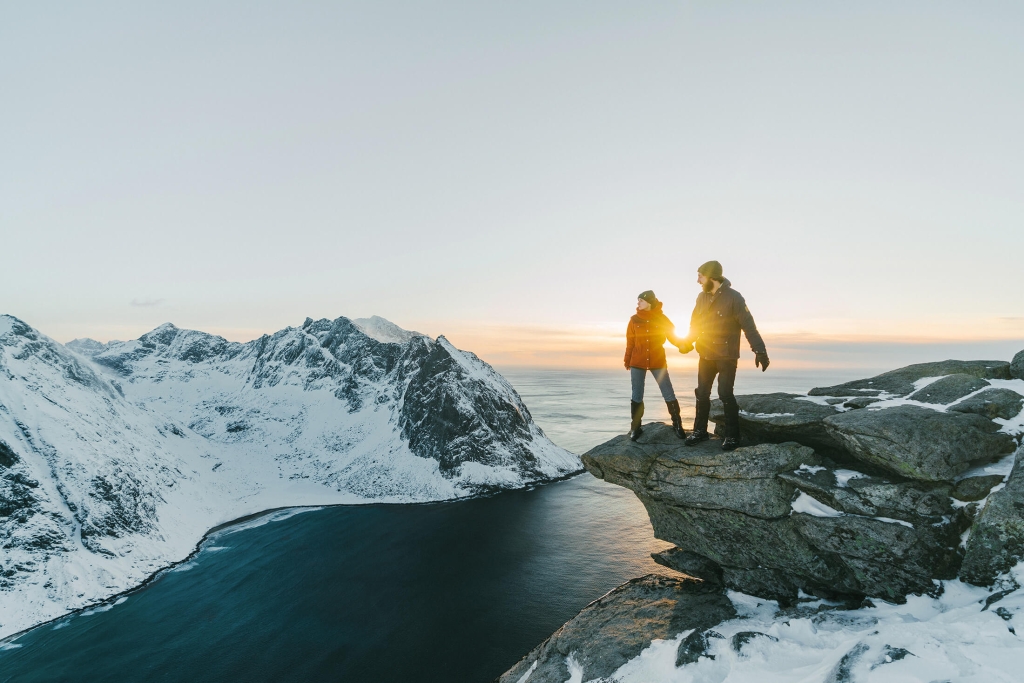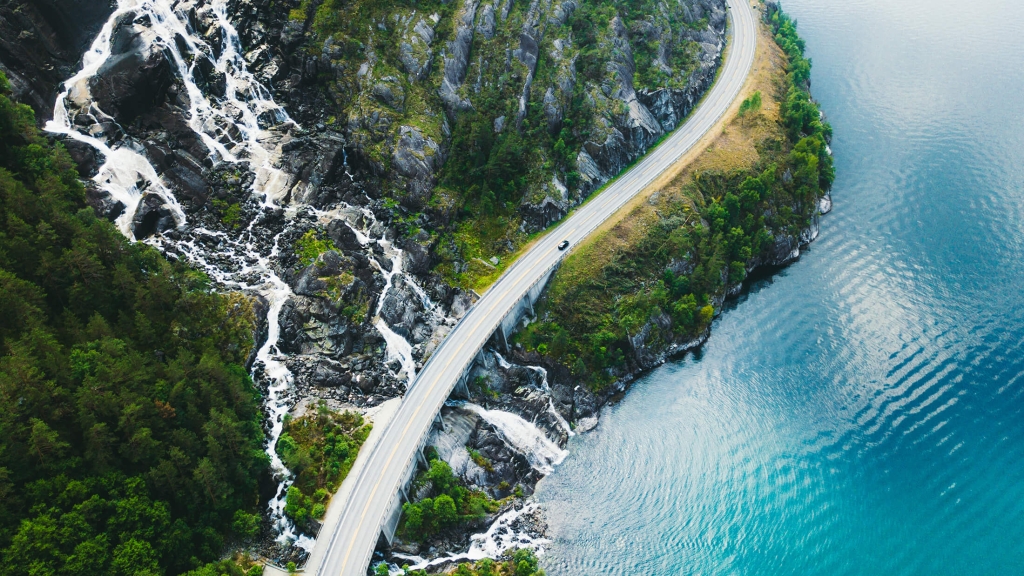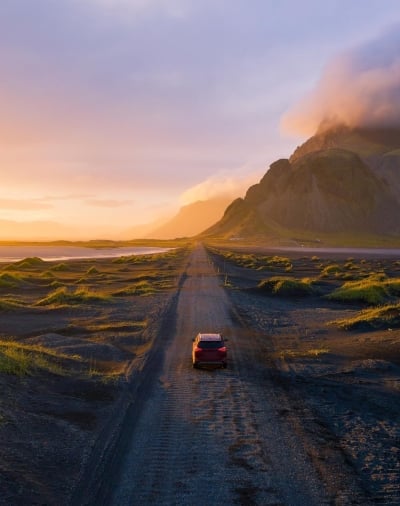From cities to islands, there is so much to see when visiting Norway. Explore the cultural hub of Oslo, walk the colorful streets of Bergen, hunt for the Northern Lights, and be amazed by the stunning natural beauty of this fantastical country.
Oslo
The Capital! A major economic, cultural, and political hub, the city has a long history that dates back more than a thousand years. This is a city that cannot be missed when coming to Norway. Most flights will be routed through here. Top things to see here include Akershus Fortress, Vigeland Park, the Viking Ship Museum (although closed until 2025/2026 for renovation), the Kon-Tiki Museum, the Royal Palace, the brand-new National Museum, the new Munch Museum, and the Opera House. And those are just the places on land! You must also cruise the Oslofjord on one of the many boat tours available.

Bergen
Norway’s second-largest city, Bergen, is set amidst a Norwegian coastal landscape of fjords and mountains. The best place to explore its seafaring history and heritage is at the beautifully preserved UNESCO World Heritage Site Bryggen, Bergen’s old wharf. Here, you’ll find small alleyways, colorfully painted wooden merchants’ homes and warehouses, as well as museums, excellent restaurants, and shopping. Explore St. Mary’s church, one of the oldest buildings in Bergen, and Rosenkrantz Tower, which dates to the 1270s. Take the funicular from the city center to the top of Mount Fløyen for fabulous views over the city and beyond, with a network of hiking trails you’d never imagine were so close to the city. Of course, the famous fish market cannot be missed if you are to get to know this city, as it has been a staple to the people here for centuries! Explore beyond the city on the Bergen Railway connecting to the Flåm Railway and the Sognefjord, which can be done as a day trip from Bergen called “Norway in a Nutshell.” Additionally, the Mostraumen fjord cruise departs from downtown Bergen.
Tromsø
The largest city in northern Norway, Tromsø is located above the Arctic Circle and is a great base for winter activities such as hunting for the Northern Lights. In fact, Tromsø is one of the best places in the world to view this natural spectacle! Viewing the midnight sun during the summer months is possible here because the sun never sets. The city is renowned for its large number of 18th-century wooden houses. A trip up Storsteinen Mountain in the Fjellheisen Cable Car offers amazing views of the surrounding fjords and mountains. Other attractions are the Arctic Cathedral, the Arctic Aquarium – Polaria, and the Polar Museum. There are opportunities to learn about the indigenous Sami culture, which is prevalent in the area. Activities include fishing, hiking, whale watching, skiing, dog sledding

Lofoten Islands
One of the most unique places in Norway is the Lofoten Islands. Located above the arctic circle and just off Norway’s northwest coastline, they are famous for their dramatic and distinctive scenery with mountains rising above the sea. Connected to the mainland by a series of bridges and tunnels and ferry service, the archipelago is home to picturesque towns and sheltered inlets, with epic fjords dotted all around. Just like Bergen, fishing has long been one of the Lofoten Islands’ primary industries, and the traditional fisherman’s cabins now are available as accommodations for visitors. In the early winter, it’s a feeding ground for orca whales and an excellent spot for whale watching. Outdoor activities include fishing, hiking, kayaking, and biking, in addition to historical and cultural museums. Artists have been drawn to the Lofoten Islands for decades due to the stunning scenery, and there are art and photography galleries featuring old and new works. Although the archipelago is located above the Arctic Circle and about the same latitude as Greenland, it has a relatively mild climate due to the Gulf Stream. This makes it a wonderful place to view the Northern Lights!
Geirangerfjord
A UNESCO World Heritage Site, Geirangerfjord is surrounded by breathtaking scenery with steep mountains and tumbling waterfalls. Quite possibly Norway’s most famous fjord, it is often listed as one of the most spectacular places in the world. Geirangerfjord lies in the west of the country in the Sunnmore region, 2.5 hours from Alesund by car. At either end of the fjord lie the scenic and secluded villages of Geiranger and Hellesylt. Due to its awe-inspiring beauty, many cruise ships and sightseeing tours pass through the fjord, particularly during the summer months. While basking in the scenery from a boat is a fantastic experience, it is well worth hiking up some fjord side trails to abandoned farms, or visiting the viewing points of Dalsnibba and Ornesvingen.

Stavanger
Stavanger is the largest city in the southwestern part of Norway and the fourth largest in the country. It is a great base from which to see some of the top natural sites of the country such as the Lysefjord and Preikestolen (The Pulpit Rock). Besides the fantastic hiking and climbing, there is surfing at the nearby beaches as well. The city and area have been important since Viking times which is why there are many many beautiful wooden buildings along the city’s scenic waterfront. Additionally, there is the centuries-old Stavanger Cathedral and several museums on everything from art and archaeology to the city’s maritime past and petroleum present. Stavanger is the oil capital of Norway.
Trondheim
Trondheim is the third largest city in Norway and the main city in the county of Trøndelag. Trondheim was the country’s capital during the Viking era and you can visit places like Sverresborg castle (12th century). It was also the religion center during the Middle Ages with Nidaros Cathedral being a pilgrimage site for almost 1000 years! The cathedral was constructed over the tomb of King Olav II, who became the patron saint of Norway, and it is the traditional location for the consecration of new kings of Norway. Trondheim is also a major cultural center for music in Norway. The country’s national museum of music, Ringve Museum, has both traditional instruments and exhibitions featuring modern sound technology. Additionally, the Rockheim museum which opened in 2010 showcases modern music, including exhibitions and live concerts. Furthermore, this is the main university city in Norway, as the largest university in Norway is here – the Norwegian University of Science and Technology (NTNU). This means there are cyclists all around and great pubs and cafes all over the city!
Kristiansand
This is Norway’s southernmost city and a summer paradise! It has lovely beaches, thousands of islands, and more hours of sun per year than most other parts of the country. Their white beaches are famous and some even have palm trees! Downtown, stroll through the Posebyen old town and indulge in fresh seafood. Dyreparken zoo and amusement park is a sure winner among kids but adults love it too! Just outside Kristiansand lies Lindesnes lighthouse, mainland Norway’s southernmost point. This is also where you’ll find the famous Michelin-starred restaurant Under, the world’s largest underwater restaurant.
Røros
Roros is a historic mining town founded in 1644 which lies in the east of Norway. It is entirely made up of wooden buildings and due to this has been made a UNESCO World Heritage Site. Because it still has so much of its original character, it feels like you’re visiting a living museum. Main highlights include Roros Church with its exquisite architecture and Olva’s Mine, which proudly exhibits Roros’ mining heritage. Since Roros is inland and does not benefit from the warm Gulf Stream, it is one of the coldest places in Norway. As such, it is particularly delightful to visit during winter, when it hosts a magical Christmas market. The scenic snow-covered landscapes surrounding the town are also lovely to explore, with dog sledding, skiing, and sleigh rides all being popular.
Ålesund
Unlike Roros, Alesund has very few wooden structures due to a devastating fire that ripped through it in 1904, destroying everything except the jail and a church. Since then a brand new town has arisen, mostly of stone this time and strongly influenced by the Jugendstil (art nouveau) movement of the time. The buildings were designed rich in ornamentation, with turrets, spires, gargoyles, and other fanciful elements based on local motifs. Visitors can learn more about the style at the Jugendstilsenteret, or Art Nouveau Center. Another fun thing to do is hike up the 400 steps to the viewpoint of Fjellstua. The mountain peak offers stunning views of Alesund and the surrounding islands.
Hero image courtesy of Fredrik Ahlsen – Maverix Media

















